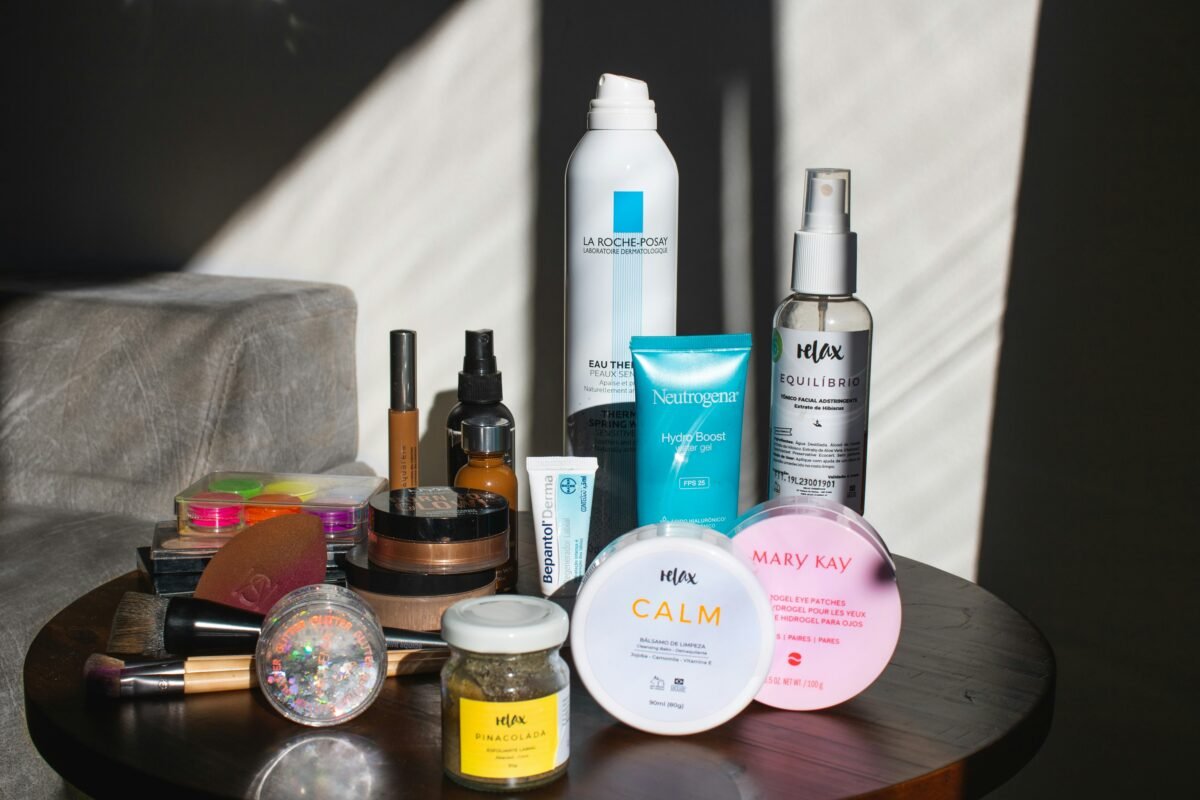Understanding Serums: How to Choose the Right One for Your Skin
Understanding Serums: How to Choose the Right One for Your Skin
When it comes to skincare, serums have gained immense popularity in recent years. They are often touted as the superheroes of a skincare routine, promising to address a variety of skin concerns such as acne, wrinkles, dullness, and dryness. But what exactly is a serum, and how do you choose the right one for your skin? In this article, we’ll break down the essentials of serums and provide practical tips on selecting the best one for your unique skin needs.
What Is a Serum?
A serum is a concentrated liquid formula designed to deliver active ingredients directly into the skin. It typically has a thinner consistency than moisturizers and is meant to be applied after cleansing and toning but before moisturizing. Serums are known for their potent formulations that target specific skin concerns more effectively due to their higher concentration of active ingredients.
The main difference between a serum and a moisturizer lies in the ingredients and purpose. While moisturizers focus on hydration and creating a barrier on the skin, serums penetrate deeper layers of the skin to address particular issues like pigmentation, fine lines, and uneven texture.
Why Should You Use a Serum?
Using a serum in your skincare routine can offer several benefits, including:
-
Targeted Treatment: Serums are formulated with high concentrations of active ingredients that can directly address specific concerns like acne, hyperpigmentation, or fine lines.
-
Better Absorption: Due to their lightweight consistency, serums are easily absorbed by the skin, allowing the active ingredients to work more effectively compared to heavier creams or lotions.
-
Anti-Aging Benefits: Many serums contain antioxidants, peptides, and other compounds that help to reduce the appearance of fine lines, wrinkles, and sagging skin.
-
Customizable Routine: Serums are available in a variety of formulations, allowing you to choose one that directly addresses your skin concerns.
Types of Serums
Not all serums are created equal. Depending on your skin’s unique needs, there are different types of serums available on the market. Here’s a breakdown of some of the most popular ones:
Hydrating Serums
Hydrating serums are formulated with ingredients like hyaluronic acid, glycerin, and aloe vera to replenish moisture in the skin. These are ideal for people with dry or dehydrated skin and are perfect for adding an extra layer of hydration before applying your moisturizer.
Anti-Aging Serums
Anti-aging serums typically contain ingredients such as retinol, peptides, and antioxidants like Vitamin C or E. These ingredients work to reduce fine lines, wrinkles, and other signs of aging by boosting collagen production and enhancing skin elasticity.
Brightening Serums
Brightening serums are designed to tackle uneven skin tone, hyperpigmentation, and dark spots. They often contain Vitamin C, niacinamide, or alpha arbutin, all of which are known for their ability to lighten dark spots and improve overall skin radiance.
Acne Treatment Serums
If you have acne-prone skin, certain serums are formulated to target acne and prevent breakouts. These serums may include salicylic acid, tea tree oil, or niacinamide, all of which have anti-inflammatory and antibacterial properties that help keep the skin clear.
Firming Serums
Firming serums are packed with ingredients like peptides and collagen-stimulating compounds to help tighten the skin and reduce sagging. These are great for those looking to improve skin elasticity and firmness.
How to Choose the Right Serum for Your Skin
Choosing the right serum depends on your skin type, concerns, and goals. Here’s a step-by-step guide to help you select the perfect serum for your skin:
Step 1: Identify Your Skin Type
The first step in choosing the right serum is to understand your skin type. There are five basic skin types:
-
Oily Skin: Characterized by excess oil production, which can lead to shine, clogged pores, and acne.
-
Dry Skin: Skin that feels tight, rough, or flaky and may be prone to redness and irritation.
-
Combination Skin: A mix of oily and dry areas, with the T-zone (forehead, nose, and chin) being oilier and the cheeks being drier.
-
Sensitive Skin: Skin that reacts easily to products, often showing signs of redness, irritation, or burning.
-
Normal Skin: Balanced skin that is neither too oily nor too dry.
Understanding your skin type will help you choose a serum with ingredients that complement your needs.
Step 2: Determine Your Skin Concerns
Once you’ve identified your skin type, the next step is to determine your skin concerns. Do you struggle with acne, pigmentation, or wrinkles? Do you need extra hydration? Knowing your skin’s specific concerns will help narrow down your serum choices.
-
For Dry Skin: Choose a hydrating serum that includes ingredients like hyaluronic acid or glycerin to draw moisture into the skin.
-
For Oily or Acne-Prone Skin: Look for serums with salicylic acid, tea tree oil, or niacinamide, which can control oil production and prevent breakouts.
-
For Aging Skin: Opt for anti-aging serums containing retinol, peptides, or antioxidants like Vitamin C to address wrinkles and fine lines.
-
For Sensitive Skin: Choose soothing serums with calming ingredients like chamomile or aloe vera, which can help reduce redness and irritation.
Step 3: Check the Ingredients
The effectiveness of a serum lies in its active ingredients. Always check the ingredient list and make sure it contains the compounds that are best suited for your skin concern. For instance:
-
Hyaluronic Acid: Great for hydration and plumping the skin.
-
Vitamin C: Known for its brightening and antioxidant properties.
-
Retinol: Ideal for improving skin texture, reducing wrinkles, and promoting cell turnover.
-
Niacinamide: Helps with redness, inflammation, and uneven skin tone.
Be mindful of potential irritants like alcohol, parabens, or synthetic fragrances, especially if you have sensitive skin.
Step 4: Consider the Texture and Consistency
Serums come in various textures, from watery to gel-like to oil-based. Consider the texture that works best for your skin type:
-
Oily Skin: Opt for a lightweight, water-based serum that won’t feel greasy or clog pores.
-
Dry Skin: A thicker, oil-based serum will help lock in moisture and provide hydration.
-
Combination Skin: A gel-based serum can offer a balance between hydration and oil control.
How to Apply a Serum Correctly
Once you’ve chosen the right serum, proper application is key to getting the most out of it. Here’s a simple step-by-step guide:
-
Cleanse Your Skin: Always start with a clean face. Use a gentle cleanser to remove dirt, oil, and impurities from the skin.
-
Toner (Optional): If you use a toner, apply it after cleansing. This helps balance your skin’s pH levels and preps the skin for better serum absorption.
-
Apply the Serum: Take a few drops of the serum and gently press it into your skin, avoiding the eye area unless specified by the product. Start from the center of your face and work outward.
-
Moisturize: After applying the serum, follow up with a moisturizer to lock in hydration and maximize the serum’s benefits.
-
Use Sunscreen: In the morning, always finish your routine with sunscreen to protect your skin from harmful UV rays.
Layering Serums: Can You Use More Than One?
Yes, you can use more than one serum in your skincare routine, but it’s essential to layer them properly for maximum effectiveness. When layering serums, start with the thinnest texture and work your way to the thicker formulas.
-
Water-Based Serums: Start with any hydrating or antioxidant serums.
-
Treatment Serums: Follow up with serums targeting specific concerns like acne or pigmentation.
-
Oil-Based Serums: Finish with heavier oil-based formulas for additional nourishment.
Conclusion
Serums can be an invaluable addition to any skincare regimen, providing targeted treatment for various skin issues such as fine lines, dark spots, acne or dryness. By understanding their distinct ingredients, textures, formulations and use cases you can make an informed decision and design a skincare regime tailored specifically for you.
When selecting a serum, be mindful of your skin type, concerns and potential sensitivities. Don’t be intimidated to experiment with different products until you find something that suits your needs best, and be patient as results may take time but with consistent use, serums can make a noticeable difference to both the health and appearance of your skin.












